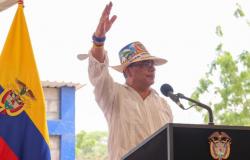There is no doubt about the commitment that the Humanitarian Coordinator has assumed with Total Peace since August 2022. Made up of more than 700 social organizations, since Gustavo Petro’s government began, they have monitored the almost 10 million Colombians who live in territories affected by the conflict. In these two years they have delivered five reports that have become a log that records the day-to-day life in the territories.
The Coordinator has just delivered its sixth report evaluating the first quarter of 2024. The data were not as expected. There is an increase of 70% in hostile actions and, most worryingly, we see that armed groups are expanding in Colombia at least in the territories that the coordinator is monitoring: Antioquia, Arauca, Buenaventura, Caquetá, Caribe, Catatumbo , Cauca, Córdoba, Chocó, Magdalena Medio, Meta and Guaviare, Nariño, Santander and Tolima Putumayo (Andean Amazon region, Sucumbíos and Piedmont).
At this moment there are places in Colombia that present critical paintings such as Nariño where they talk about the emergence of a new group, the United Self-Defense Forces of Nariño, and the fragmentation of the ELN into small groups as a result of the disagreements that the negotiations with the government. The possibility of alliances between the Second Marquetalia and the ELN to confront the EMC could bring new risks of displacement in departments such as Cauca and Nariño. This area has historically been affected by war because it is one of the most strategic corridors to transport drugs and weapons.
Faced with this situation, reported in early warnings by the Ombudsman’s Office, the Humanitarian Coordinator provides a worrying fact: the territorial expansion of armed actors in Colombia has increased by 36%. The most affected municipalities are Buenaventura, Tame, Segovia, Orito, Toribío, San Antero, Morales, Barrancabermeja, Caldono, Montelibano, Corinto, Turbo, Solano, Saravena and Remedios.
Another fact that generates concern is seeing that the group that has the greatest territorial presence is the Gaitanista Self-Defense Forces of Colombia with influence in 60 zones, followed by the EMC with 29 zones and later the ELN with 3 out of 8 26 zones. For the year 2023-2024, the predominant and expanding armed group and/or structure corresponded first to the AGC (23 zones), followed by the EMC (21 zones). One of the few encouraging aspects that the report shows is the reduction in armed events that violate the ceasefire.
This report, which we attach below, has just been delivered to Carlos Ruiz Massieu, deputy head of the UN in Colombia, the Episcopal Conference, and the International Community.






